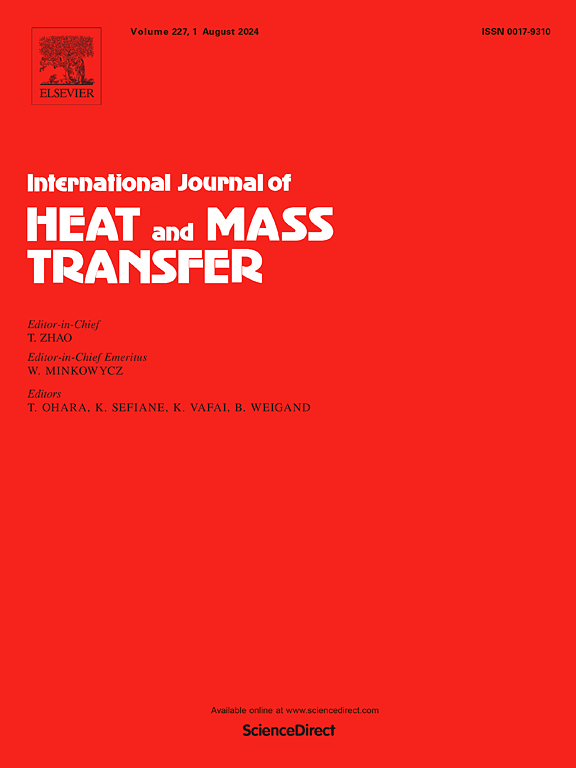Non-Oberbeck–Boussinesq effects on the convective stability in a transient natural convection boundary layer for water
IF 5
2区 工程技术
Q1 ENGINEERING, MECHANICAL
International Journal of Heat and Mass Transfer
Pub Date : 2025-01-16
DOI:10.1016/j.ijheatmasstransfer.2025.126670
引用次数: 0
Abstract
The non-Oberbeck–Boussinesq effects on the linear stability of a vertical natural convection boundary layer are investigated using the linearised disturbance equation for water flows up to a temperature difference of K at two ambient temperatures, K and K. Results reveal that the instability of the natural convection boundary layer in water is completely driven by buoyancy. The neutral stability curves are shown to be sensitive to the choice of reference temperature — when evaluated at the film temperature , the flow is stabilised by heating at small Grashof number near the critical point; but is destabilised at higher Grashof number. An increased ambient temperature is also shown to have a stabilising effect on the flow. For the buoyancy-driven instability, we propose a reference temperature for the purpose of generalising the neutral stability curves at different and values.
求助全文
约1分钟内获得全文
求助全文
来源期刊
CiteScore
10.30
自引率
13.50%
发文量
1319
审稿时长
41 days
期刊介绍:
International Journal of Heat and Mass Transfer is the vehicle for the exchange of basic ideas in heat and mass transfer between research workers and engineers throughout the world. It focuses on both analytical and experimental research, with an emphasis on contributions which increase the basic understanding of transfer processes and their application to engineering problems.
Topics include:
-New methods of measuring and/or correlating transport-property data
-Energy engineering
-Environmental applications of heat and/or mass transfer

 求助内容:
求助内容: 应助结果提醒方式:
应助结果提醒方式:


